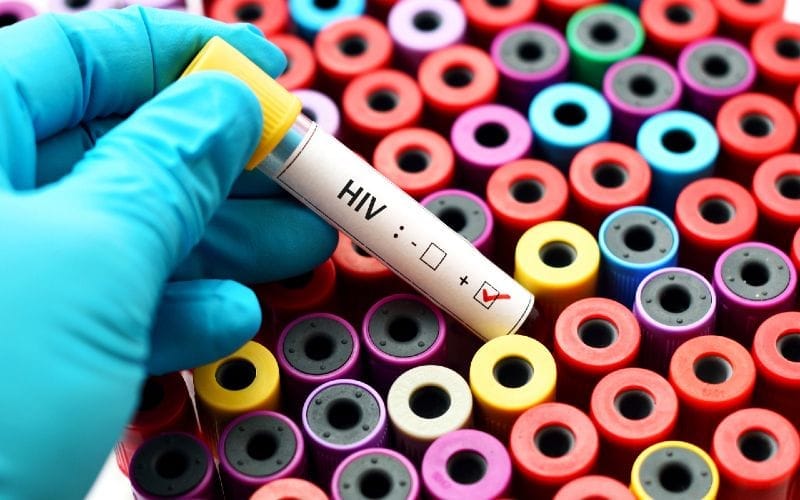Is this the HIV breakthrough we've been waiting for?
A new treatment may help to completely eradicate the virus from the body.

With the potential to deliver a cure for HIV, a team of researchers in Melbourne have unlocked the potential to completely eradicate the virus from the body.
The research has found a new way to force the virus out of hiding inside human cells.
HIV’s ability to conceal itself inside certain white blood cells has been one of the main challenges for scientists looking for a cure. It means there is a reservoir of the virus in the body, capable of reactivation, that neither the immune system nor drugs can tackle.
While we now have medication that means that people can live with the virus and prevent its transmission, that currently requires them to take medication for the rest of their lives.
A team of researchers at the Peter Doherty Institute for Infection and Immunity in Melbourne have now demonstrated a way to overcome this by making the virus visible. The technique is based on mRNA technology, which came to prominence during the Covid-19 pandemic when it was used in vaccines.
In a paper published in Nature Communications, the researchers have shown for the first time that mRNA can be delivered into the cells where HIV is hiding, by encasing it in a tiny, specially formulated fat bubble. The mRNA then instructs the cells to reveal the virus.
Further research will be needed to determine whether revealing the virus is enough to allow the body’s immune system to deal with it, or whether the technology will need to be combined with other therapies to eliminate HIV from the body.
This process will take at least a number of years.
Should you disclose your HIV status in a relationship?
This is a slightly complicated topic because there’s some parts of the world that legally require you to disclose your HIV status, and others where you could be committing an offence if you "recklessly" expose someone to the virus.
From a health perspective – with the protections available through PrEP and TasP – there’s no specific reason why you need to disclose your HIV status unless you want to.
Having said that, in the interests of open and honest communication, it’s probably a good idea to share your HIV status in the context of talking about sexual health and health generally. For example, the conversation could go something like:
- Your boyfriend: “I have asthma, so I carry an inhaler.”
- You: “Cool, I have HIV, so I take medication for that. I’m undetectable.”
- “Your boyfriend: “That’s good that you’re undetectable. I’m taking PrEP so we’ve got that well and truly covered.”
Of course, if you encounter any HIV-related stigma in that kind of conversation, then that’s a bit of a red-flag for the relationship going forward. It’s always good to educate people who aren’t up-to-date with where we’re at with HIV, but it’s not a very sexy conversation.
What should you consider before disclosing your HIV status?
Thinking about STIs may not be at the top of your priority list when you’re in the early stages of what could be an exciting relationship, but it’s never a bad idea to check in with yourself about your sexual health.
When you’re first dating, it’s much more fun to talk about kinks and fetishes, your favourite type of porn, or maybe even talk about opening up your relationship for a threesome. Banging on about advances in treatment and prevention or going into graphic detail about your latest brush with gonorrhoea could easily be a boner-killer.
A good starting point is to make sure that you’re up-to-date with your STI testing. You need to know where you’re at with HIV and any other potential issues. That gives you a really firm foundation to share that information with your partner when that conversation happens.
How do you explain undetectable HIV to your partner?
If you are HIV-positive and undetectable, you’re probably well and truly over explaining what "undetectable" means. However, if you’re beginning a new relationship and the guy that you’re dating is HIV-negative, then you may need to help him get up-to-speed on the facts.
If you are HIV-positive and on effective medication, it’s likely – and can be confirmed by testing – that your viral load is undetectable. This means that you cannot transmit the virus to anyone else.
Obviously, you can be in a relationship and have sex with other people. Your partner may still choose to take PrEP. He knows that you won’t transmit HIV to him, but someone who is not undetectable might.
What if your partner is not ready to handle your HIV status?
If you disclose to your partner that you are HIV-positive and they are not ready to handle the information, that feels like a bit of a deal-breaker.
Your HIV status isn’t going to change. Sure, you could do your best to educate them and overcome the stigma that they’re associating with the virus, but that feels like a lot of work with no guarantee that it will be worth the effort.
